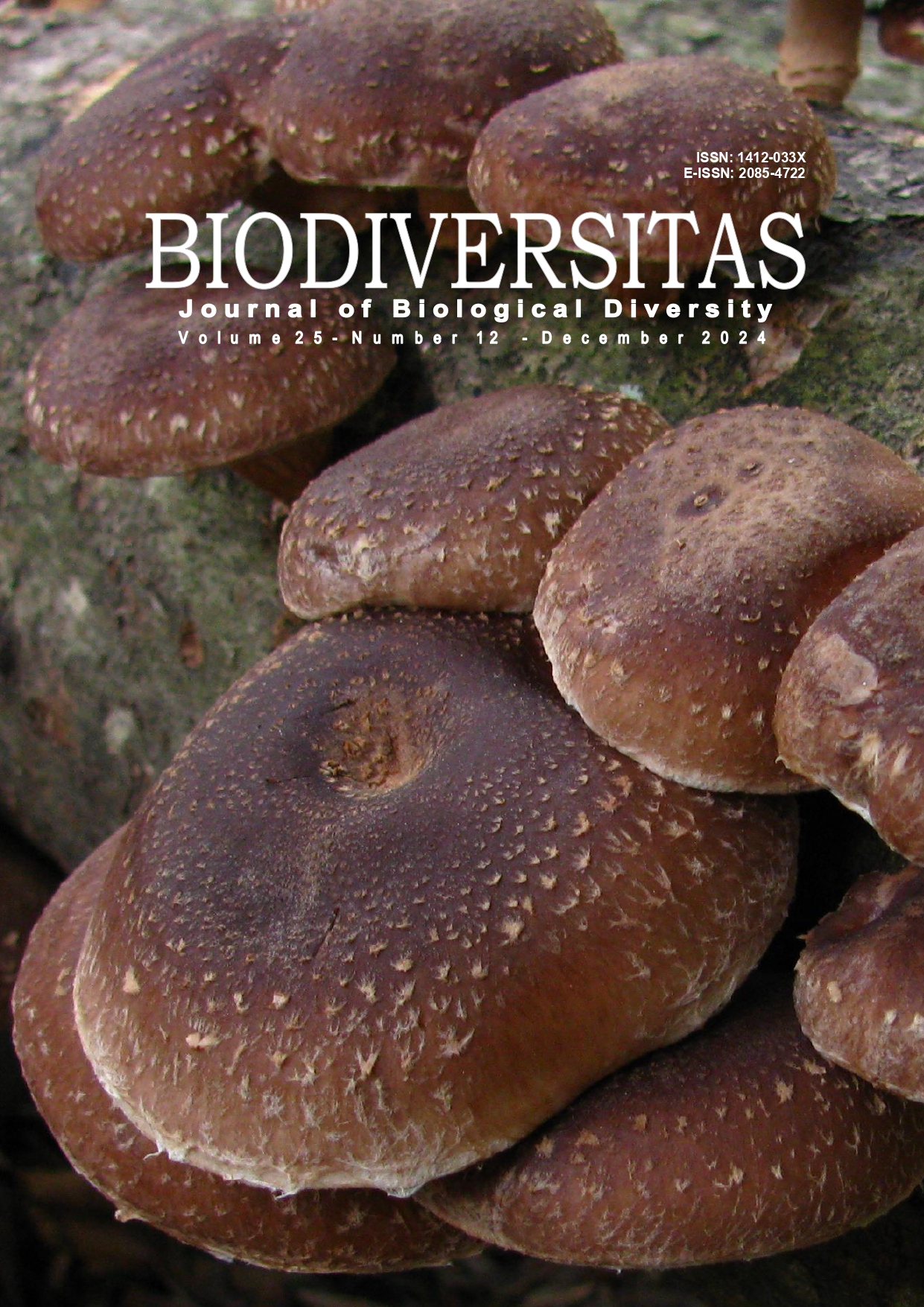Diurnal activity patterns of painted storks (Mycteria leucocephala) in an urban artificial wetland in Malaysia
##plugins.themes.bootstrap3.article.main##
Abstract
Abstract. Limin NA, Abidin MZZ, Kamar NNS, Amran MAA, Yusof NNM. 2024. Diurnal activity patterns of painted storks (Mycteria leucocephala) in an urban artificial wetland in Malaysia. Biodiversitas 25: 4878-4885. The increasing population of painted storks (Mycteria leucocephala) in Malaysia poses potential risks to native waterbird species, such as the milky stork. Despite their growing presence in urban artificial lakes, such as those in Putrajaya and Selangor, our understanding of their activity patterns remains limited, highlighting the importance of this research. Therefore, this study closely investigated the diurnal activity patterns of painted storks in an urban artificial wetland in Malaysia. Stork behavior was observed using instantaneous scanning and focal sampling methods for over 20 days. Results indicated that preening was the most common activity (30%), followed by foraging (24%), vigilance (23%), walking (15%), and other behaviors (8%). Storks displayed significantly more preening in the morning, though the durations were shorter compared to the afternoon and late afternoon. They also spent more time foraging and being vigilant in the morning than at other times. Furthermore, during all sessions, the number of individuals observed in the grassy areas was much higher than in the lake or on nearby rooftops. This study provides valuable insights into the behavior of painted storks, which could inform management strategies for waterbird species in urban artificial wetlands.


 https://orcid.org/0009-0005-3890-7251
https://orcid.org/0009-0005-3890-7251